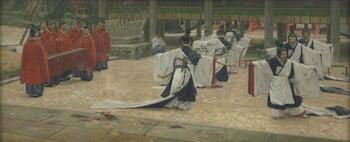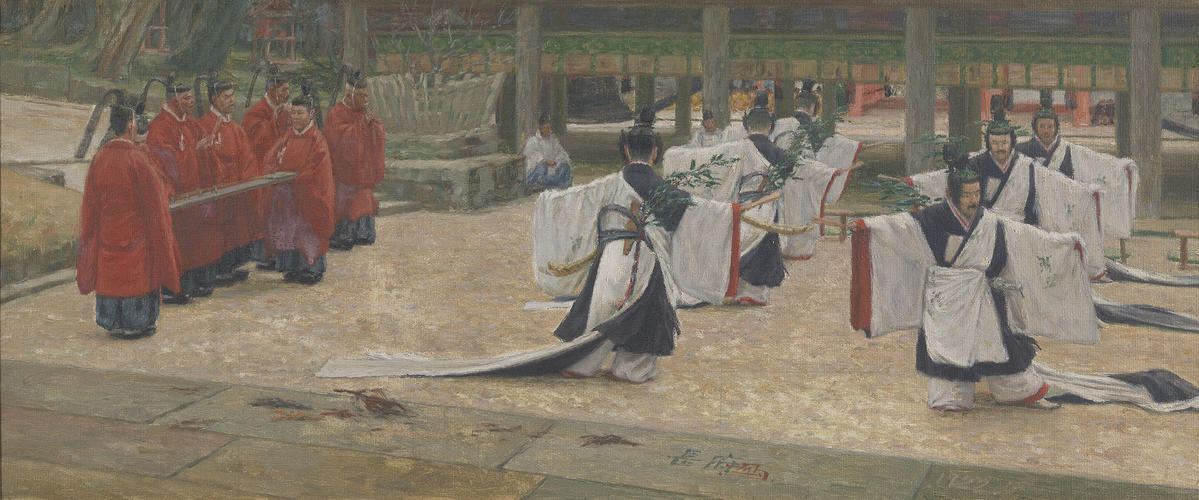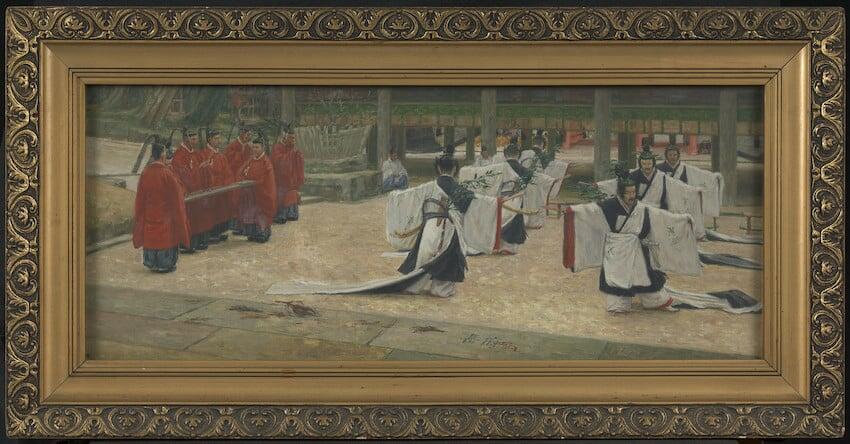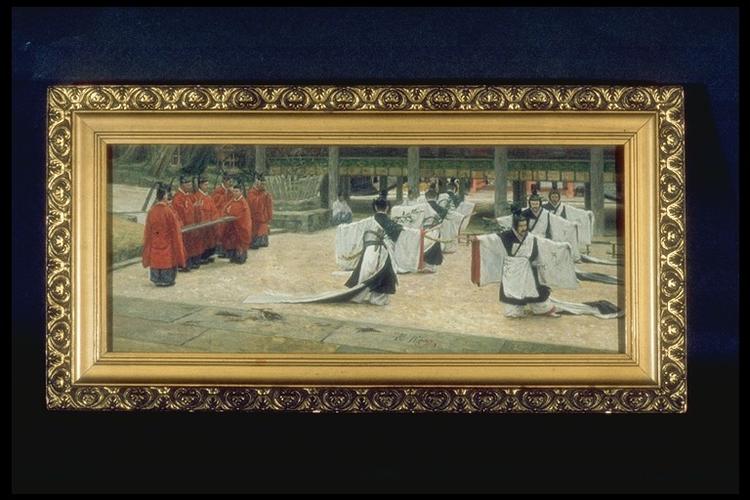-
1 of 253523 objects
Yamato-mai performance Signed and dated 4 May 1922
Oil on canvas | 24.5 x 61.0 cm (sight) | RCIN 403847




-
At Kasuga Grand Shrine in Nara, a short piece of Shintō ritual music and dance called yamato-mai (倭舞) is performed. The ceremony, which first took place at the shrine on 11 February in AD 916 , is a form of gagaku, the traditional performing arts preserved at the Imperial Court and certain shrines. Six men dressed in ancient costume are accompanied by musicians who sing and play a kagurabue (transverse flute with six holes), hichiriki (oboe) and yamato-goto (six-string zither). The ensemble leader maintains the beat using a shakubyōshi (clapper). The dancers bear symbolic offerings known as tamagushi, made from the branches of the sacred sakaki tree (Cleyera ochnacea) which grows nearby.
The artist, Ōmura Chōfu, has worked in the naturalistic style of the Yōga school (western-style painting), eschewing traditional paper and water-based pigments in favour of oil on canvas. Artists returning from study in Europe in the early Meiji period increasingly assimilated western materials and aesthetics into their work, founding the Meiji Art Society (Meiji Bijutsu-kai), Japan’s first western painting association, in 1889. They nevertheless sought to appeal to a broad audience by depicting familiar festivals, myths and views, as here. Ōmura referred to the Jōganshiki, a book of ceremony compiled in ad 869–71, for details of the yamato-mai performance.
The Prince of Wales, later Edward VIII, visited Kasuga Grand Shrine on 4 May 1922 and fed the sacred deer, which roam freely nearby. After his return to England, the painting was sent to Buckingham Palace, and in 1935 it was transferred from there by Queen Mary to Osborne House, where it was displayed in the Durbar Corridor.
Text adapted from Japan: Courts and Culture (2020)Provenance
Presented to King Edward VIII when Prince of Wales in Japan, May 1922
-
Creator(s)
Acquirer(s)
-
Medium and techniques
Oil on canvas
Measurements
24.5 x 61.0 cm (sight)
38.1 x 74.6 x 3.5 cm (frame, external)
Place of Production
Nara [Japan]